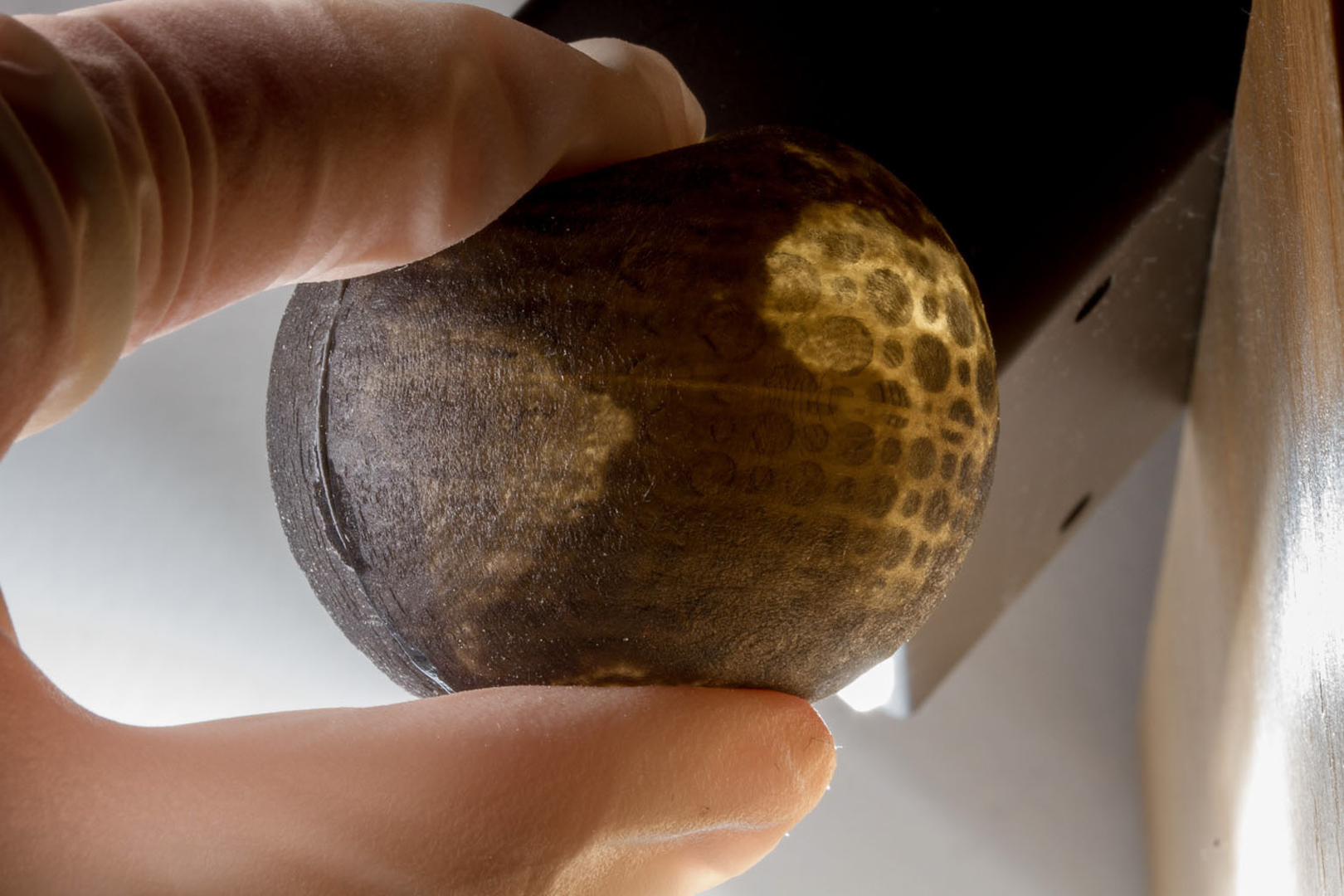“Spec2Fab: a reducer-tuner model for translating specifications to 3D prints” by Chen, Levin, Sitthi-amorn, Didyk and Matusik
Conference:
Type:
Title:
- Spec2Fab: a reducer-tuner model for translating specifications to 3D prints
Session/Category Title: 3D Printing
Presenter(s)/Author(s):
Moderator(s):
Abstract:
Multi-material 3D printing allows objects to be composed of complex, heterogenous arrangements of materials. It is often more natural to define a functional goal than to define the material composition of an object. Translating these functional requirements to fabri-cable 3D prints is still an open research problem. Recently, several specific instances of this problem have been explored (e.g., appearance or elastic deformation), but they exist as isolated, monolithic algorithms. In this paper, we propose an abstraction mechanism that simplifies the design, development, implementation, and reuse of these algorithms. Our solution relies on two new data structures: a reducer tree that efficiently parameterizes the space of material assignments and a tuner network that describes the optimization process used to compute material arrangement. We provide an application programming interface for specifying the desired object and for defining parameters for the reducer tree and tuner network. We illustrate the utility of our framework by implementing several fabrication algorithms as well as demonstrating the manufactured results.
References:
1. Alexa, M., and Matusik, W. 2010. Reliefs as images. ACM Trans. on Graphics (SIGGRAPH 2010) 29, 4 (July), 60:1–60:7. Google ScholarDigital Library
2. Baran, I., Keller, P., Bradley, D., Coros, S., Jarosz, W., Nowrouzezahrai, D., and Gross, M. 2012. Manufacturing layered attenuators for multiple prescribed shadow images. Computer Graphics Forum 31, 2 (May), 603–610. Google ScholarDigital Library
3. Bermano, A., Baran, I., Alexa, M., and Matusik, W. 2012. ShadowPIX: Multiple images from self-shadowing. Computer Graphics Forum 31, 2 (May), 593–602. Google ScholarDigital Library
4. Bickel, B., Bächer, M., Otaduy, M. A., Matusik, W., Pfister, H., and Gross, M. 2009. Capture and modeling of non-linear heterogeneous soft tissue. ACM Trans. on Graphics (SIGGRAPH 2009) 28, 3 (July), 89:1–89:9. Google ScholarDigital Library
5. Bickel, B., Bächer, M., Otaduy, M. A., Lee, H. R., Pfister, H., Gross, M., and Matusik, W. 2010. Design and fabrication of materials with desired deformation behavior. ACM Trans. on Graphics (SIGGRAPH 2010) 29, 4 (July), 63:1–63:10. Google ScholarDigital Library
6. Bickel, B., Kaufmann, P., Skouras, M., Thomaszewski, B., Bradley, D., Beeler, T., Jackson, P., Marschner, S., Matusik, W., and Gross, M. 2012. Physical face cloning. ACM Trans. on Graphics (SIGGRAPH 2012) 31, 4 (July), 118:1–118:10. Google ScholarDigital Library
7. Cook, R. L. 1984. Shade trees. Computer Graphics (SIGGRAPH 84) 18, 3 (Jan), 223–231. Google ScholarDigital Library
8. Cutler, B., Dorsey, J., McMillan, L., Müller, M., and Jagnow, R. 2002. A procedural approach to authoring solid models. ACM Trans. on Graphics (SIGGRAPH 2002) 21, 3 (July), 302–311. Google ScholarDigital Library
9. Dong, Y., Wang, J., Pellacini, F., Tong, X., and Guo, B. 2010. Fabricating spatially-varying subsurface scattering. ACM Trans. on Graphics (SIGGRAPH 2010) 29, 4 (July), 62:1–62:10. Google ScholarDigital Library
10. Finckh, M., Dammertz, H., and Lensch, H. P. A. 2010. Geometry construction from caustic images. Computer Vision (ECCV 2010) 6315, 464–477. Google ScholarDigital Library
11. Hašan, M., Fuchs, M., Matusik, W., Pfister, H., and Rusinkiewicz, S. 2010. Physical reproduction of materials with specified subsurface scattering. ACM Trans. on Graphics (SIGGRAPH 2010) 29, 4 (July), 61:1–61:10. Google ScholarDigital Library
12. Jackson, T. R. 2000. Analysis of Functionally Graded Material Object Representation Methods. PhD thesis, Massachusetts Institute of Technology.Google Scholar
13. Jordan, M., Ghahramani, Z., Jaakkola, T., and Saul, L. 1999. An introduction to variational methods for graphical models. Machine Learning 37, 183–233. Google ScholarDigital Library
14. Kennedy, J., and Eberhart, R. 1995. Particle swarm optimization. In Neural Networks, 1995. Proceedings., IEEE International Conference on, vol. 4, IEEE, 1942–1948.Google Scholar
15. Kou, X., and Tan, S. 2007. Heterogeneous object modeling: A review. Computer-Aided Design 39, 4, 284–301. Google ScholarDigital Library
16. Kou, X., Parks, G., and Tan, S. 2012. Optimal design of functionally graded materials using a procedural model and particle swarm optimization. Computer-Aided Design 44, 4, 300–310. Google ScholarDigital Library
17. Kumar, V., Burns, D., Dutta, D., and Hoffmann, C. 1999. A framework for object modeling. Computer-Aided Design 31, 9, 541–556.Google ScholarCross Ref
18. Low, Y., Gonzalez, J., Kyrola, A., Bickson, D., Guestrin, C., and Hellerstein, J. M. 2010. Graphlab: A new parallel framework for machine learning. Conference on Uncertainty in Artificial Intelligence (UAI) (July).Google Scholar
19. Malzbender, T., Samadani, R., Scher, S., Crume, A., Dunn, D., and Davis, J. 2012. Printing reflectance functions. ACM Trans. on Graphics (SIGGRAPH 2012) 31, 3 (May), 20:1–20:11. Google ScholarDigital Library
20. Matusik, W., Ajdin, B., Gu, J., Lawrence, J., Lensch, H. P. A., Pellacini, F., and Rusinkiewicz, S. 2009. Printing spatially-varying reflectance. ACM Trans. on Graphics (SIGGRAPH Asia 2009)) 28, 5 (Dec.), 128:1–128:9. Google ScholarDigital Library
21. Mitra, N. J., and Pauly, M. 2009. Shadow art. ACM Trans. on Graphics (SIGGRAPH Asia 2009) 28, 5, 156:1–156:7. Google ScholarDigital Library
22. Papas, M., Jarosz, W., Jakob, W., Rusinkiewicz, S., Matusik, W., and Weyrich, T. 2011. Goal-based caustics. Computer Graphics Forum 30, 2, 503–511.Google ScholarCross Ref
23. Papas, M., Houit, T., Nowrouzezahrai, D., Gross, M., and Jarosz, W. 2012. The magic lens: refractive steganography. ACM Trans. on Graphics (SIGGRAPH Asia 2012) 31, 6 (Nov.), 186:1–186:10. Google ScholarDigital Library
24. Skouras, M., Thomaszewski, B., Bickel, B., and Gross, M. 2012. Computational design of rubber balloons. Computer Graphics Forum 31, 2 (May), 835–844. Google ScholarDigital Library
25. van Laarhoven, P., and Aarts, E. 1987. Simulated annealing: theory and applications, vol. 37. Springer. Google ScholarDigital Library
26. Vidimče, K., Wang, S.-P., Ragan-Kelley, J., and Matusik, W. 2013. OpenFab: A programmable pipeline for multi-material fabrication. ACM Trans. on Graphics (SIGGRAPH 2013) 32, 4 (July). Google ScholarDigital Library
27. Weyrich, T., Peers, P., Matusik, W., and Rusinkiewicz, S. 2009. Fabricating microgeometry for custom surface reflectance. ACM Trans. on Graphics (SIGGRAPH 2009) 28, 3 (July), 32:1–32:6. Google ScholarDigital Library




